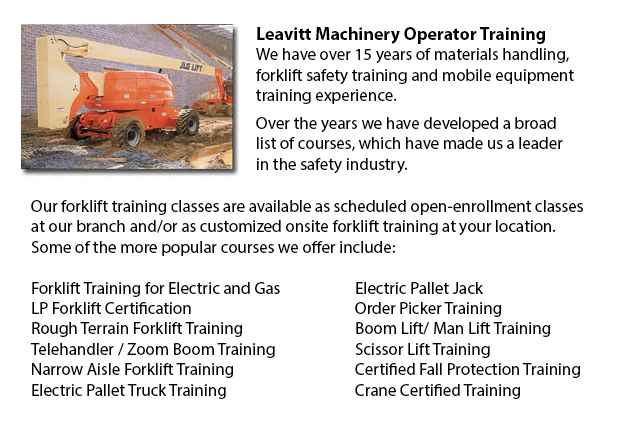
Aerial Lift Safety Training Kamloops - Every year, there are approximately 26 construction deaths due to the utilization of aerial lifts. Most of the craftsmen killed are laborers, electrical workers, ironworkers, carpenters or painters. The majority of the deaths are caused by falls, tip-overs and electrocutions. The greatest hazard is from boom-supported lifts, like for instance bucket trucks and cherry pickers. Most fatalities are connected to this particular kind of lift, with the rest involving scissor lifts. Other dangers comprise being thrown out of a bucket, being struck by falling things, and being caught between the lift bucket or guardrail and a thing, such as a joist or steel beam.
In order to operate an aerial lift safely, carry out a check on the following items prior to making use of the device: operating and emergency controls, safety devices (such as, outriggers and guardrails), personal fall protection gear, and tires and wheels. Look for possible leaks in the air, fuel-system, hydraulic fluid. Check the device for missing or loose components.
The areas that worker would use the aerial device must be examined carefully for potential hazards, like for instance bumps, holes, drop-offs and debris. Overhead powerlines have to be avoided and monitored. It is suggested that aerial lift devices be used on level, stable surfaces. Don't work on steep slopes which go beyond slope limits which the manufacturer specified. Even on a slope that is level, brakes, wheel chocks and outriggers must be set.
Employers are required to provide aerial lift operators and maintenance mechanics with the proper manuals. Mechanics and operators need to be trained by a qualified person experienced with the relevant kind of aerial lift.
Aerial Lift Safety Guidelines:
o Prior to operating, close lift platform chains and doors.
o Do not climb on or lean over guardrails. Stand on the floor of the bucket or platform.
o Use the provided manufacturer's load-capacity restrictions.
o When working near traffic, utilize appropriate work-zone warnings, like for example signs and cones.
Electrocutions are preventable if safety procedures are followed. Stay as far away from power lines - at least 10 feet. Skilled electrical workers should insulate and/or de-energize power lines. People working must make use of personal protective tools and equipment, such as a bucket which is insulated. Then again, a bucket that is insulated does not protect from electrocution if, for example, the worker touches a different wire providing a path to the ground.
When inside the bucket, workers need to prevent possible falls by securing themselves to the guardrails by making use of a positioning device or a full-body harness. If there is an anchorage in the bucket, a positioning belt with a short lanyard is acceptable.
By following the manufacturer's instructions, tip-overs can be prevented. Never drive the lift platform whilst it is elevated, unless otherwise specified by the manufacturer. Adhere to the device's vertical and horizontal reach limitations, and never exceed the specified load-capacity.
-
Forklift Training Course Kamloops
Forklift Training Course Kamloops - CSA and OSHA establish criteria for forklift safety training that meets current standards and regulations. Anybody planning to use a forklift is needed to successfully complete safety training prior to utilizing an... More -
Forklift Training Program Kamloops
Forklift Training Program Kamloops - The forklift is a common powered industrial vehicle which is in wide use these days. They are occasionally called lift trucks, jitneys or hi los. A departments store will use the forklift in order to unload and lo... More -
Aerial Lift Training Kamloops
Aerial Lift Training Kamloops - The mechanized access platform known as an aerial work platform is a machinery which provides access to places that are otherwise inaccessible to people and other machine. Likewise called an elevating work platform or... More -
Forklift Training School Kamloops
Forklift Training School Kamloops - Forklift Training School - CSA and OSHA establish criteria for forklift safety training which meets existing standards and regulations. Anybody planning to use a forklift is needed to successfully complete safety t... More -
Heavy Equipment Training Courses Kamloops
Heavy Equipment Training Courses Kamloops - When choosing a heavy equipment operator course, the initial step must be to determine the capacity in which you would be working with heavy machines. You could find the correct course to teach you how to o... More -
Heavy Equipment Training School Kamloops
Heavy Equipment Training School Kamloops - HEO or also known as the heavy equipment operator courses would provide you with the skills and knowledge required in order to enter the workforce as an entry level heavy machine operator. In this 12 week co... More -
Telehandler Operator Training Kamloops
Telehandler Operator Training Kamloops - Telescopic handler Forklifts or telehandler forklifts are common industrial equipment found in numerous construction industry environment. The telehandler is a helpful machinery and makes for a valuable tool w... More -
Telehandler License Kamloops
Telehandler License Kamloops - A telehandler or telescopic handler is a machine which is frequently utilized in agricultural and industrial applications. It has a similar appearance to a forklift and even works in a similar manner, though, the teleha... More

Forklift Training Kamloops
TOLL FREE: 1-888-254-6157
Kamloops, British Columbia
forklifttrainingkamloops.com
Email Us
About Us


